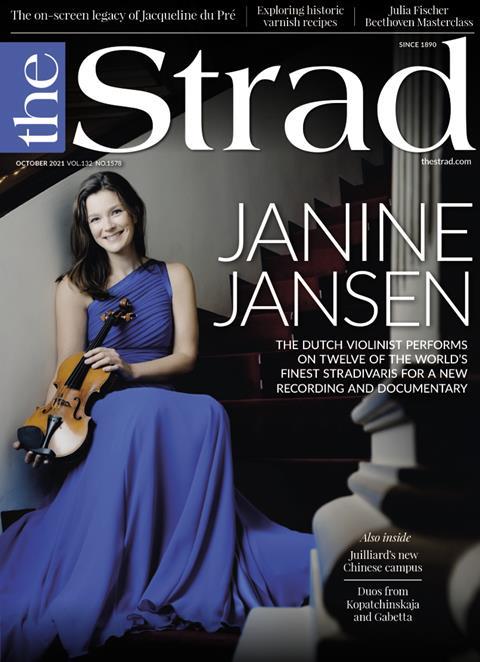Violinist Julia Fischer shares her thoughts on the third movement of Beethoven’s Violin Concerto, in this extract from the October 2021 issue

The following extract is from The Strad’s October 2021 issue Masterclass: Julia Fischer on the third movement of Beethoven’s Violin Concerto in D major. To read it in full, click here to subscribe and login. The October 2021 digital magazine and print edition are on sale now
It’s interesting that Beethoven didn’t give a tempo indication for this third movement. He only wrote ‘Rondo’, which leaves you free to decide for yourself. The speed that you choose will then determine your whole approach. Do you want the semiquavers (s) to sound virtuosic or more melodic, for example? There’s a recording of Menuhin playing it super slowly, and it’s not wrong: nobody said that it can’t be played that way! You can make any interpretation work, as long as you adapt how you bow and articulate. I choose to play it joyfully, with a lot of spirit. It isn’t early Classical Beethoven, or late Beethoven that leaves all Classical and even Romantic rules behind. It’s middle Beethoven and it’s joyful and positive, without any drama or fury.
Pianistic thinking
To me, the form and architecture of a piece are very important, so I think firstly in terms of the score and harmonies – like a pianist – and only secondly in terms of melody and the violin part. I also choose fingerings that give a pianistic clarity, without too many shifts or slides. When I have a melody, I try to play it on one string, especially if the notes are under a slur, and I use finger extensions to avoid audible shifts, as in the passage from bar 151.
Of course, I don’t always want to create a piano-like sound. On the piano, once you’ve pressed down a key, the colour of that note can’t be changed. On the violin, you can create an entire world in one note, right to the very end. In the opening theme in the third movement, for example, you can develop the A in the slurred A–D interval of bar 1 to give a different colour from the tenuto–staccato A–D interval two octaves higher in bar 11. This helps to bring out the different articulations more effectively.
Knowing the score
To know what the orchestra is doing and what part the violin plays in the whole score is very important, especially in this concerto. Are you an accompaniment? Are you the melody? Your interpretation has to make sense when you take into consideration everybody else on stage with you. After letter A, for example, it’s essential to know that there’s a conversation between the soloist and the woodwind section. It is fun to interact jokily with the wind players in bars 51–56: you can play more, or less, and then they have to reply spontaneously. After this, violinists have a tendency to be nervous about the semiquaver passage from bar 68 and rush, but actually the orchestra has the melody here and the soloist has a less important accompaniment, so you can relax.
From bar 127 the conversation is between the violinist and the bassoon: you play the melody and then the bassoon replies, then it’s you again, and so on. When the bassoon has the melody, it is your job to make that line sound more beautiful. Your accompaniment is only useful if it helps the bassoon to shine more. I use a lot of left hand, to make the semiquavers sound espressivo and cantabile, not like virtuoso passagework.
Read: Sentimental Work: Julia Fischer
Read: Masterclass: Julia Fischer on Beethoven’s Violin Concerto, Third Movement
Read: Masterclass: Simon Standage on Bach’s Violin Sonata in E major
Read: Masterclass: Tchaikovsky Souvenir d’un lieu cher
-
This article was published in the October 2021 Janine Jansen issue
The Dutch violinist performs on twelve of the world’s finest Stradivaris for a new recording and documentary. Explore all the articles in this issue . Explore all the articles in this issue
More from this issue…
- Janine Jansen’s Stradivari recording project
- The on-screen legacy of Jacqueline du Pré
- Exploring historic varnish recipes
- Juilliard’s new Chinese campus
- Duos from Kopatchinskaja and Gabetta
- The Strad Calendar 2022
Read more playing content here
-












































No comments yet